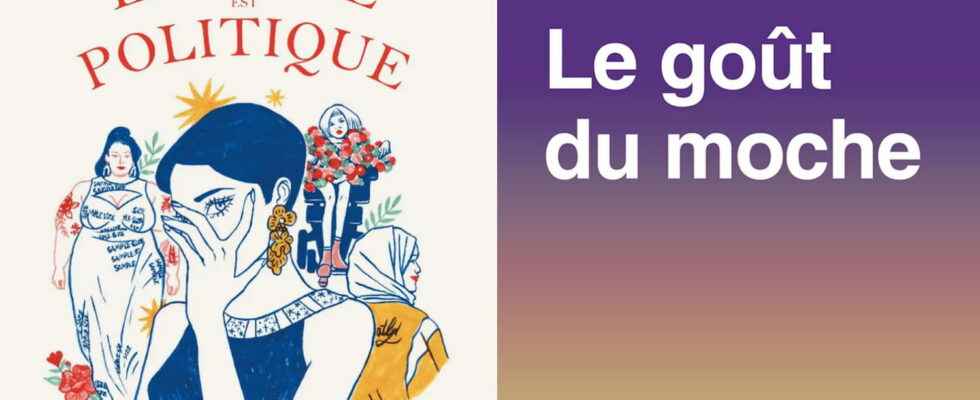A fantasy machine, fashion is also an industry worth billions of euros. And who questions the authors of these four brilliant books, to read and reread to better understand this sector.
The fashion, a superficial subject? That’s certainly not what people think. four authors of these fascinating books. History, eco-responsibility, sociology, politics… They all address essential themes to better understand one of the main French industries.
“Fashion is political” by Mélody Thomas
Head of the fashion section for the magazine’s website Marie Claire, Melody Thomas has always taken care to treat the subject as a whole: a discipline at the crossroads of art, sociology, politics and economics. It is with this same rigor that she wrote her first book, Fashion is political. A brief inclusive lexicon. This alphabet in 27 words dwells on the questions that cross the industry: the movement bodypositive, ageism, gender identities… In short, it allows us to consider current issues in a few pages. Bright.
- Most : the colorful illustrations of Eloïse Heinzer, which we would gladly frame at home.
- Our favorite passage:Our tastes have a social logic which is superimposed on the class struggle. Applied to fashion, the matter has long been simple: a trend emerges from the upper classes and, when it reaches the working classes, we find new ones because the wealthy classes will always seek to stand out from those they consider inferior.“
- Number of pages : 287
- Publishing house : Les Insolentes (Hachette Book)
- Release date : 2022
“The Taste of the Ugly” by Alice Pfeiffer
vogue, The Guardian, Antidote, The Inrocks… For more than ten years, Alice Pfeiffer analyzes the trends that make and break fashion for the most prestigious publications. And questions the notion of good taste prevailing in the sector. After a remarkable first essay on the Parisienne, entitled I’m not from Parisshe tackles in her second book, The taste of the ugly, whether or not fashion sets up an “acceptable” and/or elitist trend. A reflection between sociology and philosophy on what has the right to receive the name “beautiful” and what is labeled “ugly” according to the times.
- Most : writing in the first person singularusual in Anglo-Saxon works, less common in French.
- Our favorite part: “In fashion, the vulgar is often a question of excess and codes deemed unsuitable, outside of the feminine formatted for and by the traditionalist eye: the couturier Charles Frederick Worth imagines wide crinolines, marking the hips and the fall of the kidneys. Elsa Schiaparelli’s colors are vibrant, Mugler’s shoulder pads are towering, and both suggest a woman taking up more space than allowed.“
- Number of pages : 184
- Publishing house : flammarion
- Release date : 2021
“In the heart of fashion houses” by Sophie Kurkdjian and Sandrine Tinturier
Sophie Kurkdjian and Sandrine Tinturier are two specialists in the history of clothing. Together, they wrote this book, At the heart of fashion houses. A social history of fashion workers (1880-1950) which explores behind the scenes of fashion and dwells on the “little hands” of Belle Epoque to the Glorious Thirties in France. The shopgirls, as they were then called, were also women who got involved, during wars as well as during social struggles. Midinettes and leading women.
- Most : the many vintage photos which illustrate the work, allowing to put faces on the famous midinettes.
- Our favorite part: “At the heart of her job and the city, the midinette experiences the ambiguity of her social position, both subordinate and elevated. Dividing her day between the exaggerated luxury of the house that employs her and the misery in which maintain her low salary and her modest extraction, the Parisian fashion worker can be compared to the servant.
- Number of pages : 210
- Publishing house : Editions of the workshop
- Release date : 2021
“The Black Book of Fashion” by Audrey Millet
The course ofAudrey Millet is atypical. This former stylist is also a doctor in history and a researcher associated with the CNRS. In his work The black book of fashion. Creation, production, manipulationshe tackles what fashion counts less brilliant : the exploitation of textile workers, the consequences of the industry on the environment, the consumer society, the excesses of textile recycling, greenwashing… In short, this book looks at one of the most polluting sectors in the world straight in the eye and straight up an uncompromising portrait.
- Most : the bibliography particularly provided to go even further in the reflection on these subjects.
- Our favorite part: “Without lower-cost labour, no trendy 5-euro T-shirt… Women are all the more affected as they receive daily wages that are on average 25% lower than those of men. In addition to their work, they carry very heavy responsibilities, such as taking care of a member of the house who is ill. Generally speaking, they draw water, clean the house and take care of the children in parallel to their employment in the factory or in the fields”.
- Number of pages : 264
- Publishing house : Editions Les Peregrines
- Release date : 2021
